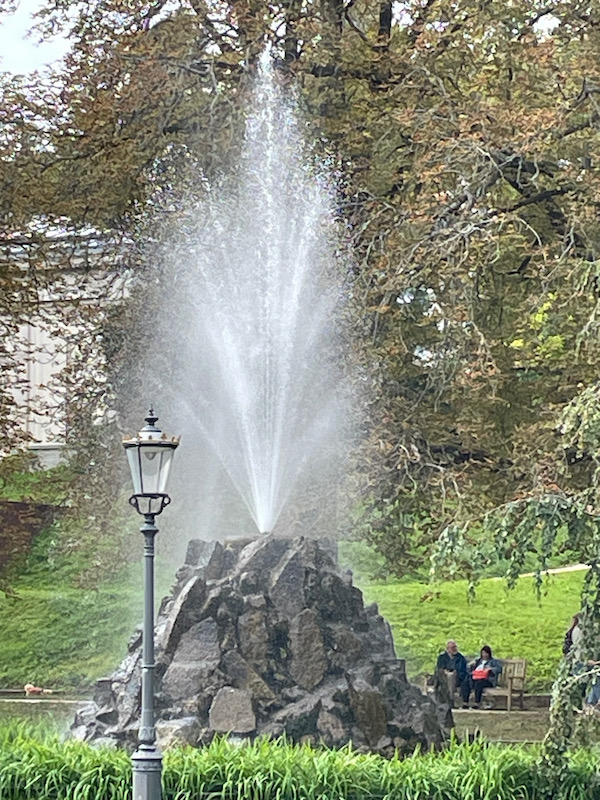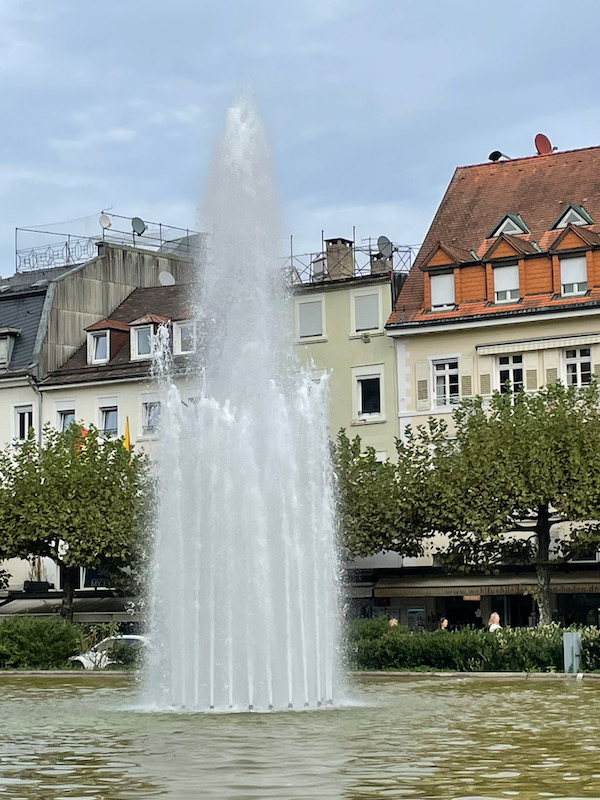Our Blog - Germany 2023 - Baden-Baden, Germany
I always think the name "Baden-Baden" sounds like the people naming it stuttered and the name stuck :-) However, like many names, it has an actual meaning. In old German, Baden comes from the plural form of Bad ("bath") and the original German name of the town was just Baden. In general, towns with the name "Bad" or "Baden" in German are spa towns (similar to the towns in France that end in "-les-Bains" or "-les-Thermes"). The 2nd Baden was added when the original Margraviate of Baden split into several territories in 1535, so it means the town of Baden in the territory of Baden.
Roman settlement here has been dated as far back as the emperor Hadrian. The ruins of Roman baths were rediscovered just below the New Castle in 1847 and date to the reign of Caracalla (AD 210s), who visited the area to relieve his arthritic aches. The first church was built in the 7th century and by 1112, it was the seat of the Margraviate of Baden. Originally in the Old Castle (now a ruin on the summit above town), they built the New Castle in 1479.
It fared fairly well during WWII, with less than 10% of the houses being heavily damaged or destroyed although some of the residential areas outside of town were a bit more damaged. After the war, Baden-Baden became the headquarters of the French occupation forces in Germany.
A bit of trivia: the Baden-Baden witch trials took place here between 1627 and 1631. While the numbers are not confirmed, it is estimated that over 200 people, mostly women, where condemned as witches and burned.
We drove in and parked and then headed into the old town to check out the sights. The old town is nice in that much of it is pedestrian-only. The streets seem wider than what we are used to but that did make it a bit easier to walk around. The buildings to me have a slightly Italian style to them, 5-6 stories tall (fairly uniformly around the part of town where we walked).
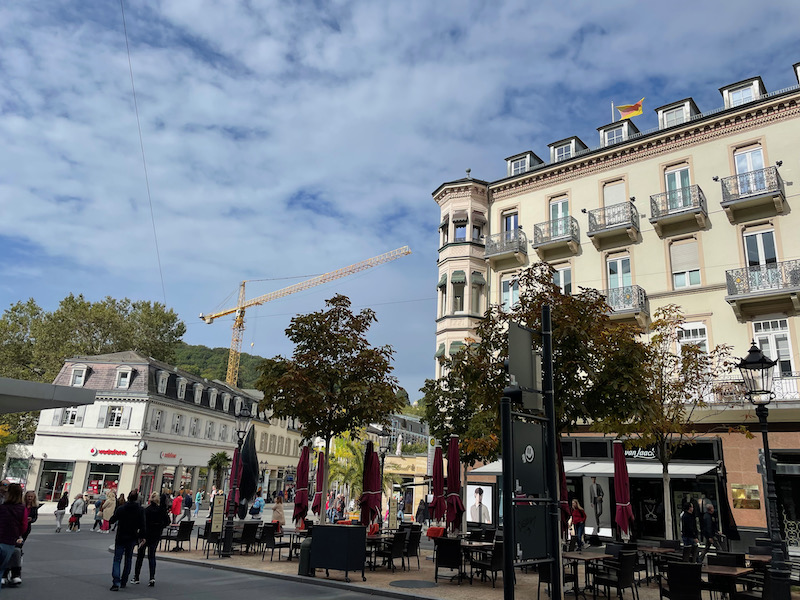
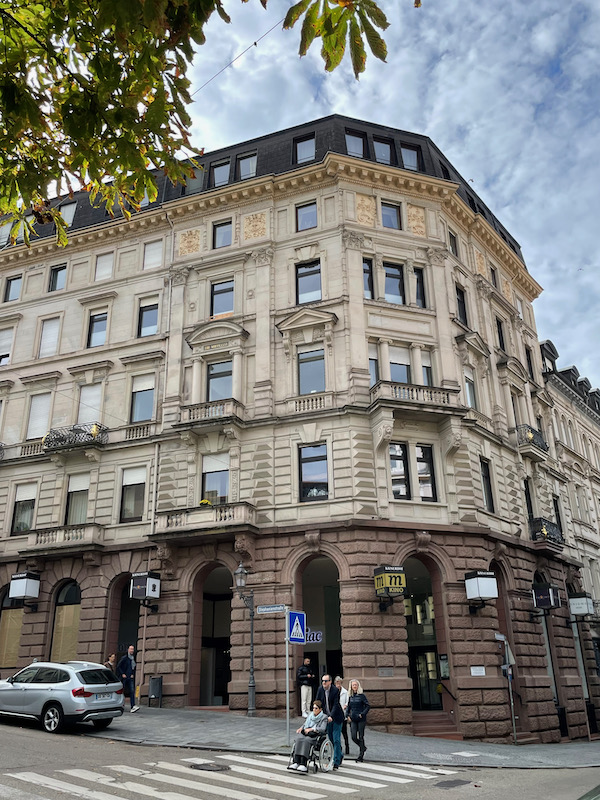
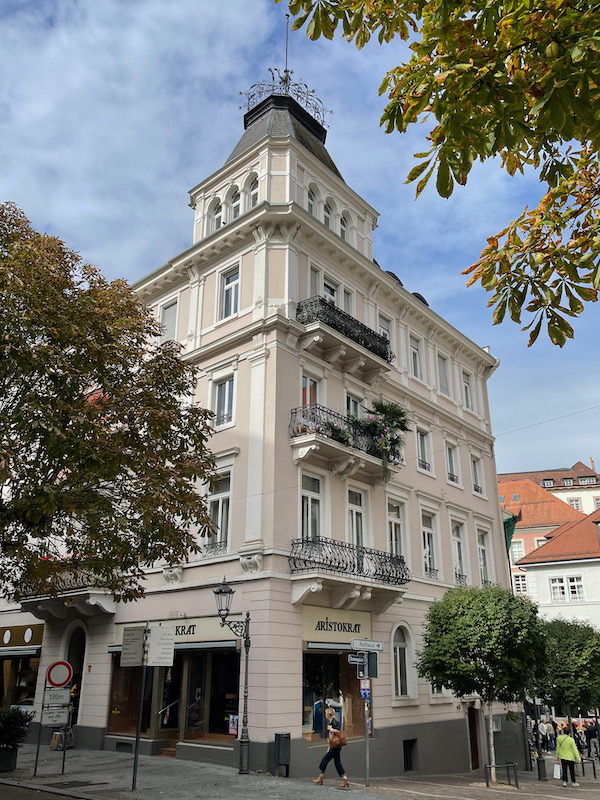
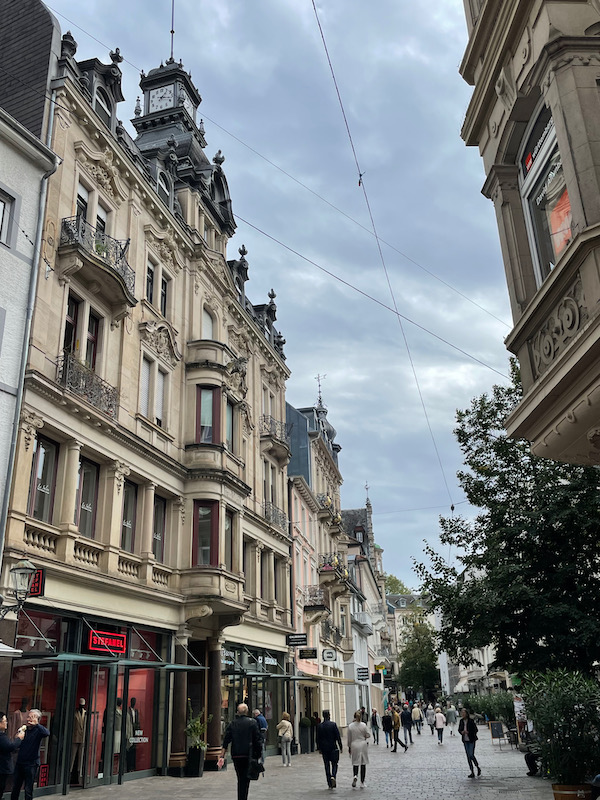
This is called the Reiherbrunnen, or the Heron Fountain. It is fed with thermal water and shows 3 bronze herons on top. One of the herons has spread its wings and the water streams out of its beak.
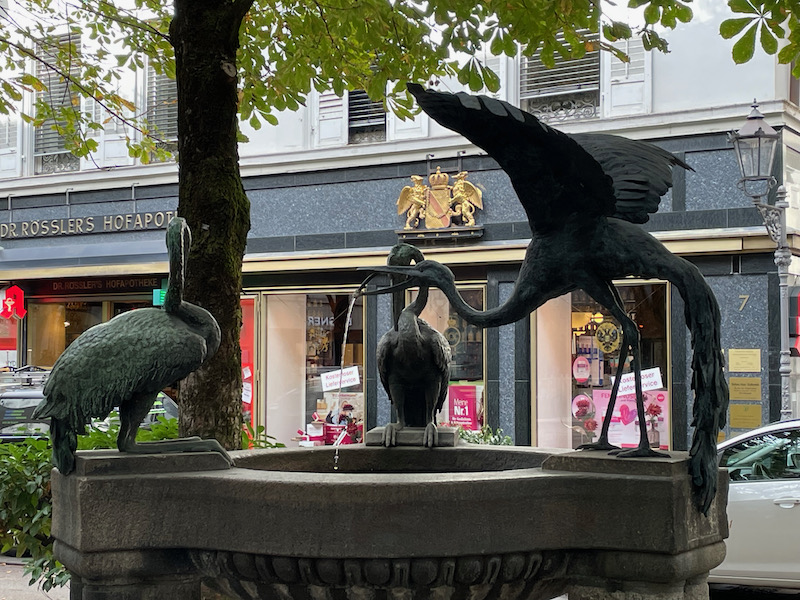
While we didn't go in (Lucy wasn't allowed), there is a Fabergé Museum there. The house of Fabergé jewelry company was founded in 1842 in Russia but the family origins can be traced back to 17th-century France. While they make different things, they are probably most known for the Fabergé eggs. There were less than 70 created between 1885 and 1917, with 57 of them surviving today. No pictures of any eggs (since I didn't go in) but you can see them on the Wikipedia page for the Fabergé egg and some of them in this interesting article from Town and Country magazine.
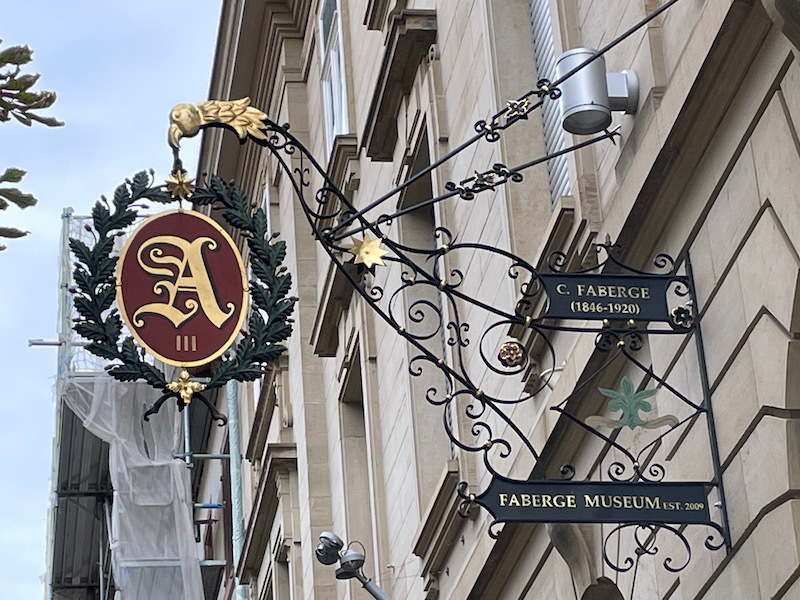
You wouldn't guess it looking at this building, but it is an elementary school and, in fact, it was BUILT as a school. The large building with sandstone facade in the style of historicism or neoclassicism was built in 1890 was built when Otto Vincenti, a former magistrate of Italian descent died and left 200,000 gold marks (an enormous sum for the time) to the city for charitable purposes.
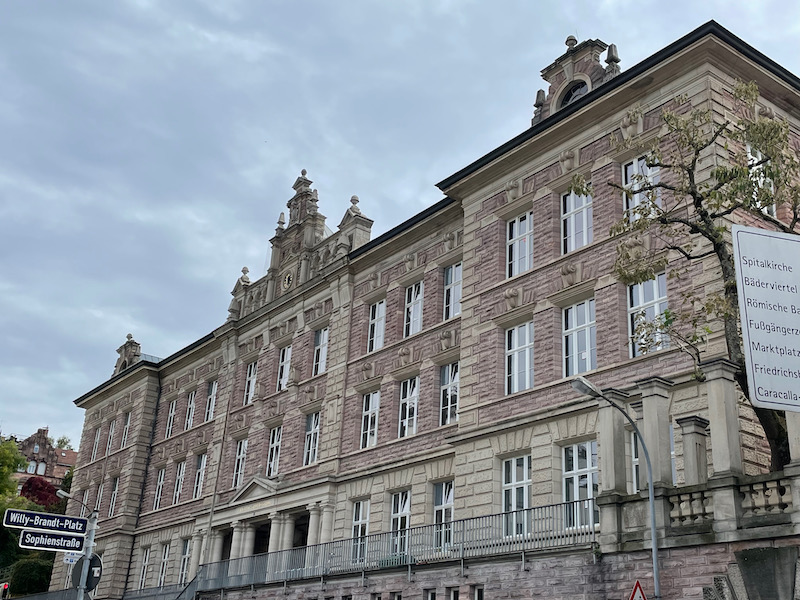
I mentioned that this is a "spa" town, and here is the Friedrichsbad Baden-Baden, a classic bathhouse featuring thermal pools, along with massages. The stately, 19th-century building, built in the Renaissance style, was considered the most modern bathhouse in Europe when it opened in 1877. We didn't partake in the bath-experience (again, Lucy wasn't allowed), the website says there are 17 coordinated wellness stations including thermal showers, dry and wet saunas, a brush massage, and pools.
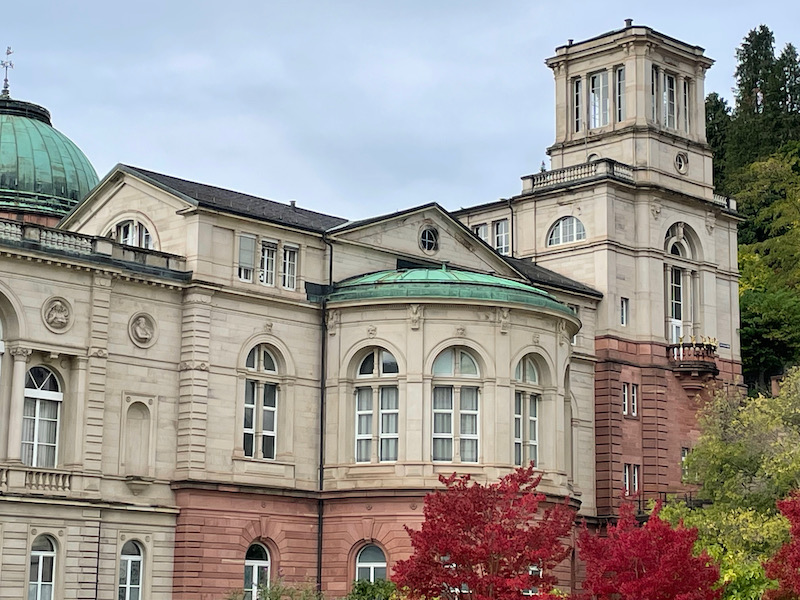
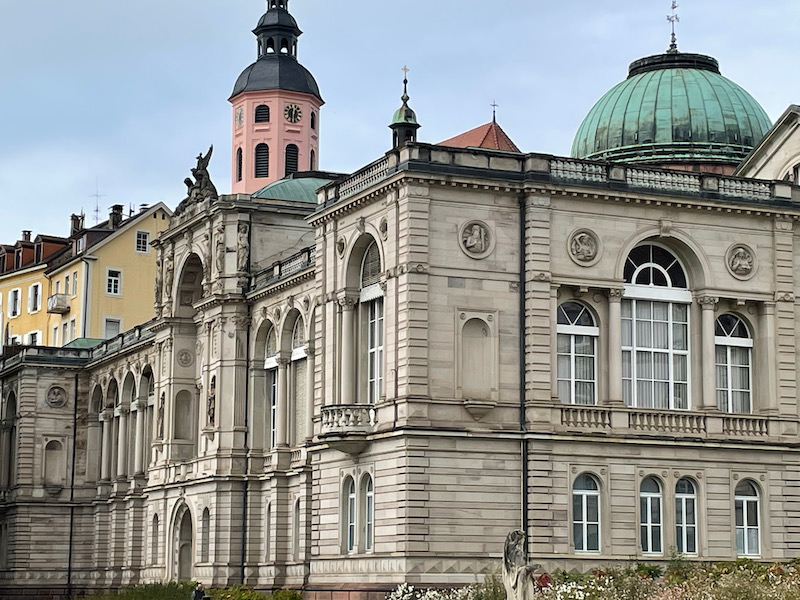
I don't believe there is a tavern still here but the Bäder-Taverne sign is another one of these wonderful wrought-iron signs, this one with a Roman chariot racer and his horses.
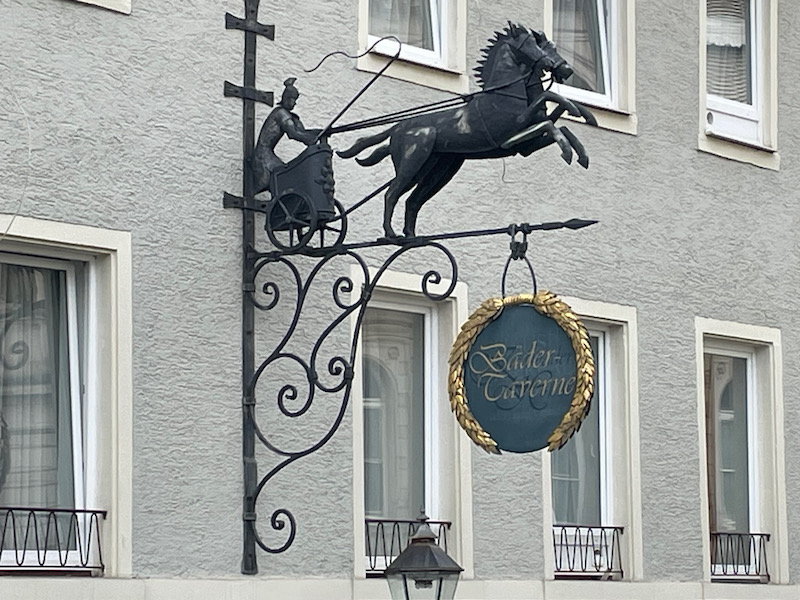
Another Stiftskirche, or Collegiate Church. Originally built in Romanesque style, then redesigned in the 15th century in late Gothic. The spire was added in the 18th along with a redesign of the interior into Baroque style. It was re-Gothic'd in the 19th century. The church is dedicated to Peter and Paul, and late Gothic statues of them are over the main doorway, along with Mother and Child.
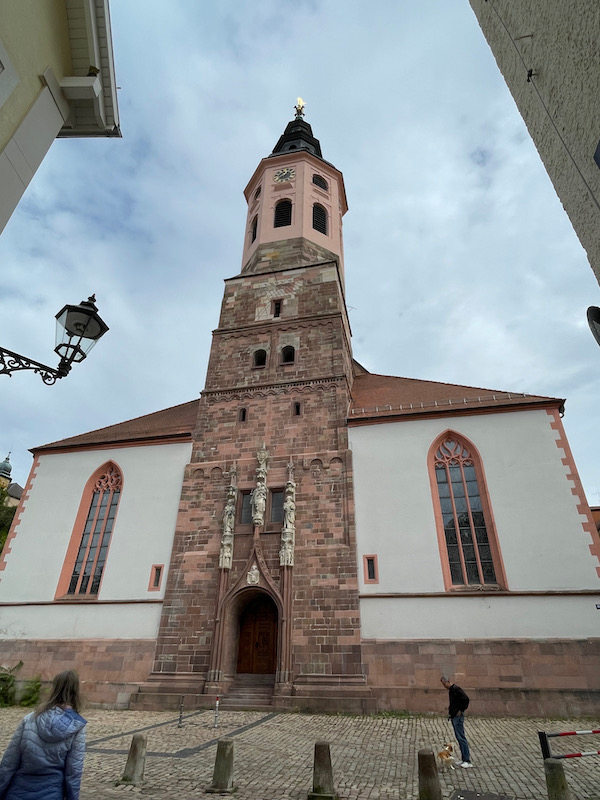
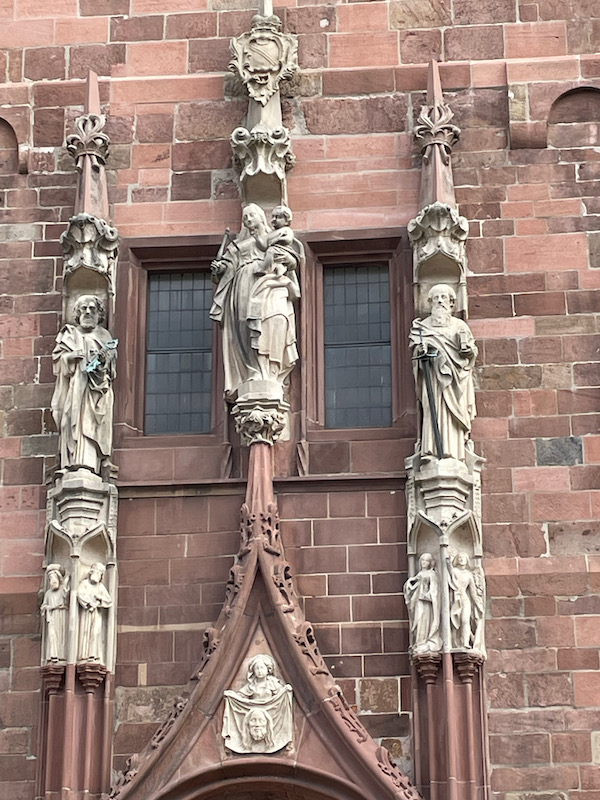
You can see the Gothic arches and ribbed vaults here in the nave and side aisles. There are a few altarpieces, including this one which is still in Baroque style.
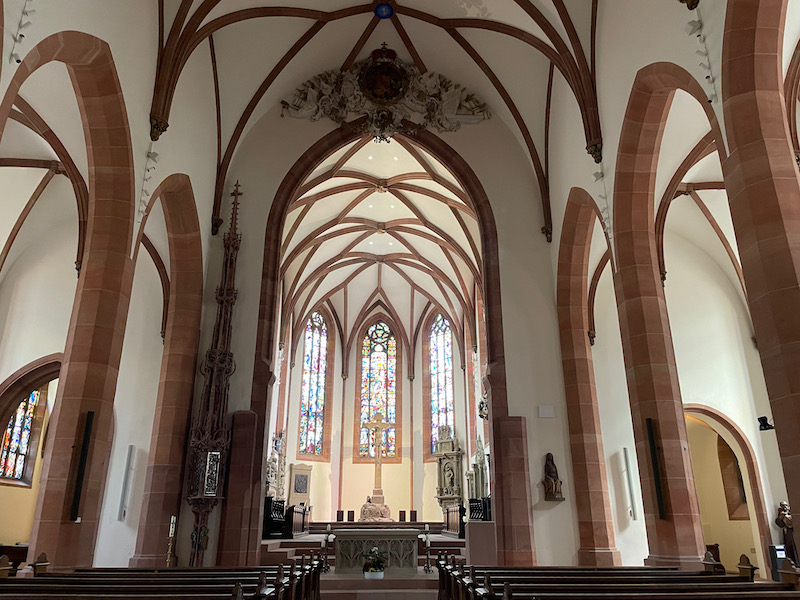

The stained-glass windows are definitely modern, but quite nice in that you can clearly see the images or scene they are depicting (sometimes, the older windows are difficult to understand for me).
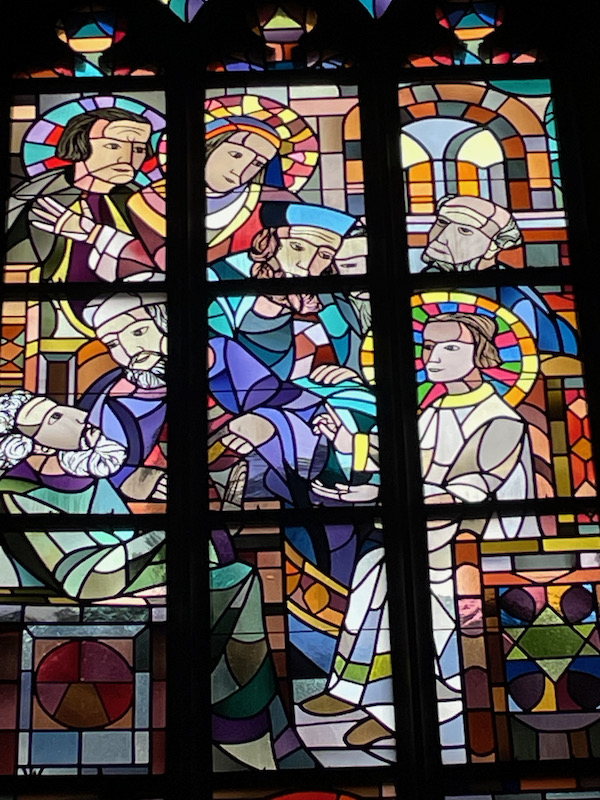
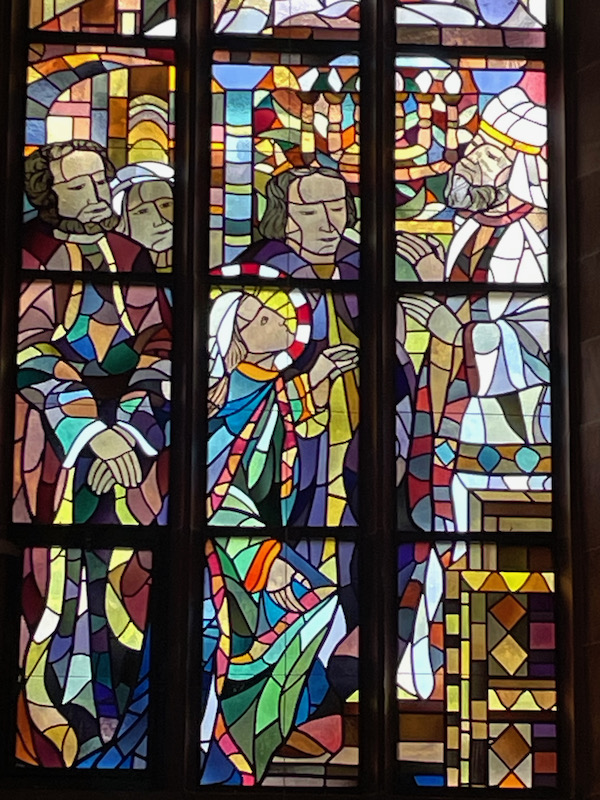
We normally see highly-carved wooden choir stalls, but here, the choir stalls are decorated with inlaid wood and the ends of the wooden pews are carved.
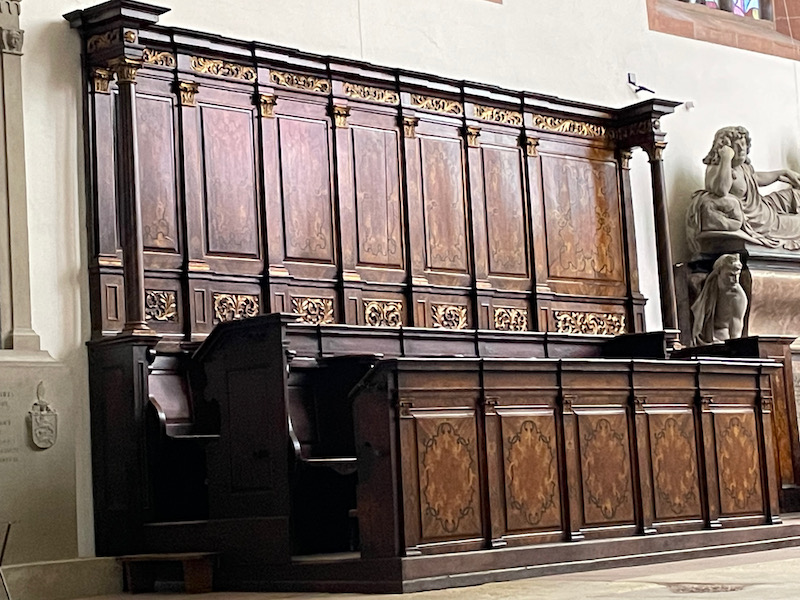
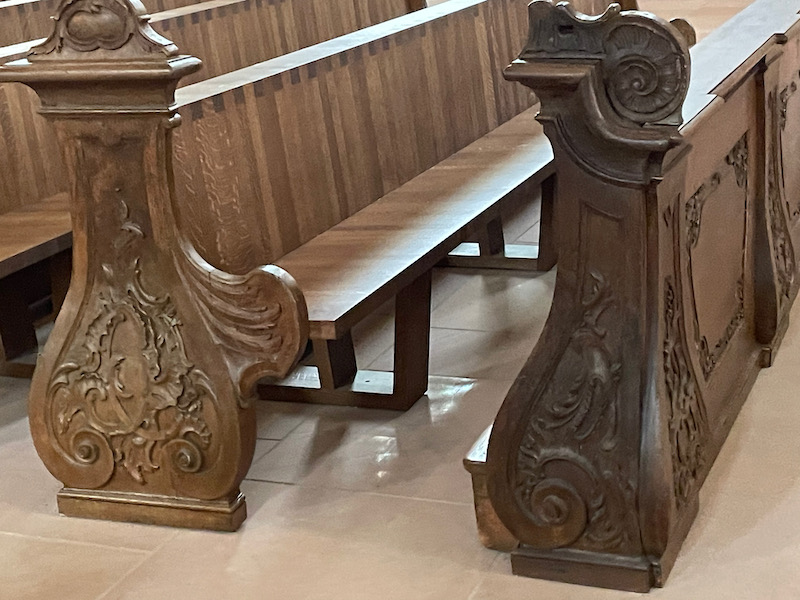
There are several tombs of the Margraves of Baden. "Margrave" was used to denote the head of an Imperial principality in Germany, like in Baden an Brandenburg. This one is the tomb of Margrave Phillibert and Mechthild of Bavaria.
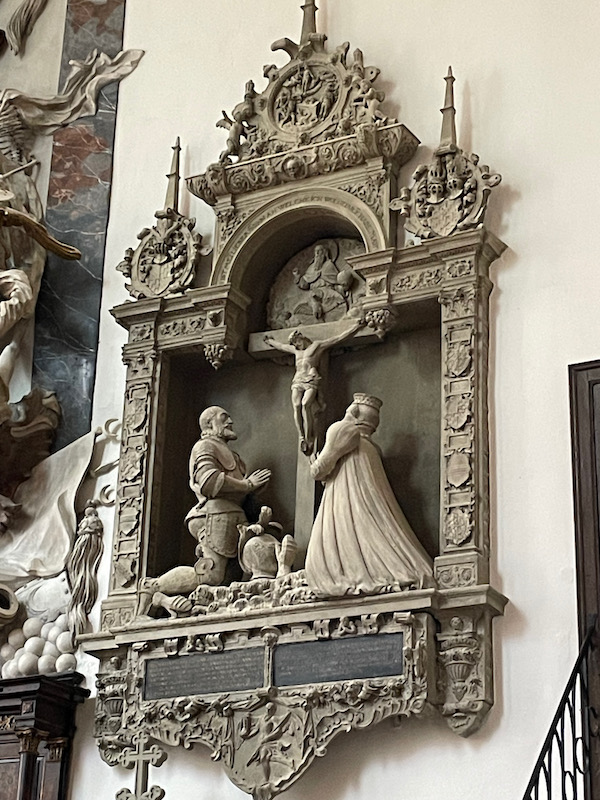
Just to the left of that tomb is the Epitaph of Ludwig Wilhelm of Baden, which you can tell is much larger and more impressive. He was the lieutenant general of all imperial troops and a victorious general in the Turkish wars. The tomb is in the form of a baroque altar, surrounded by figures that are supposed to symbolize justice, bravery and wisdom.
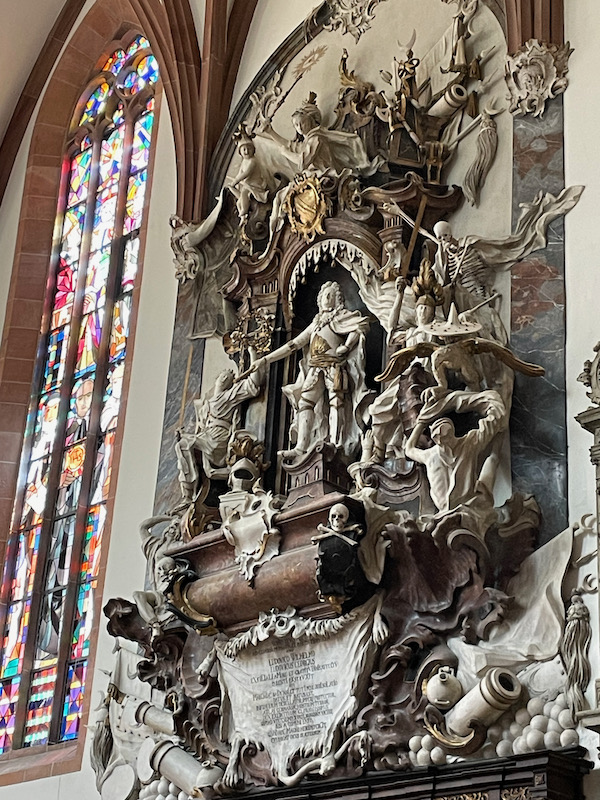
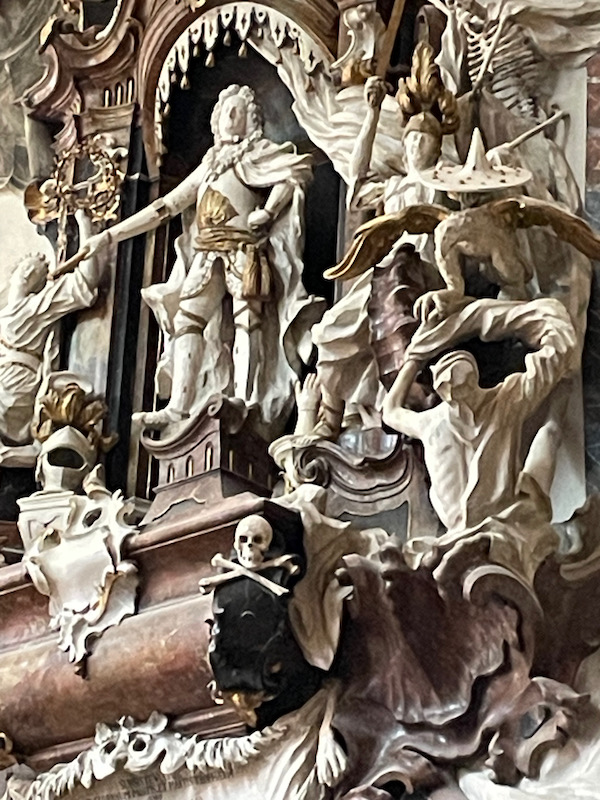
The extremely artistically crafted late Gothic sacrament house on left side of the choir was built around 1490 during the reign of Margrave Christoph. It is over 40 feet tall with five levels, the top surrounded by rich branches and roots. Figures from the Old and New Testaments are grouped around the tabernacle.
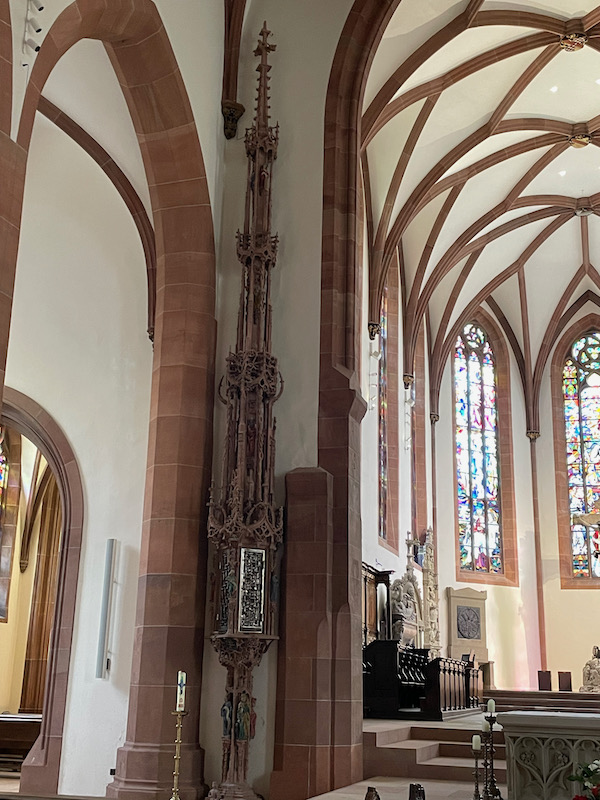
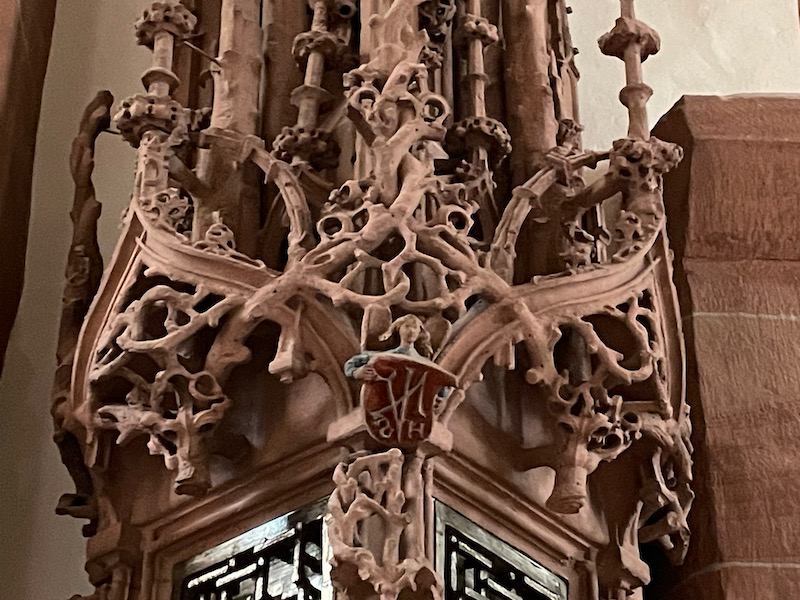
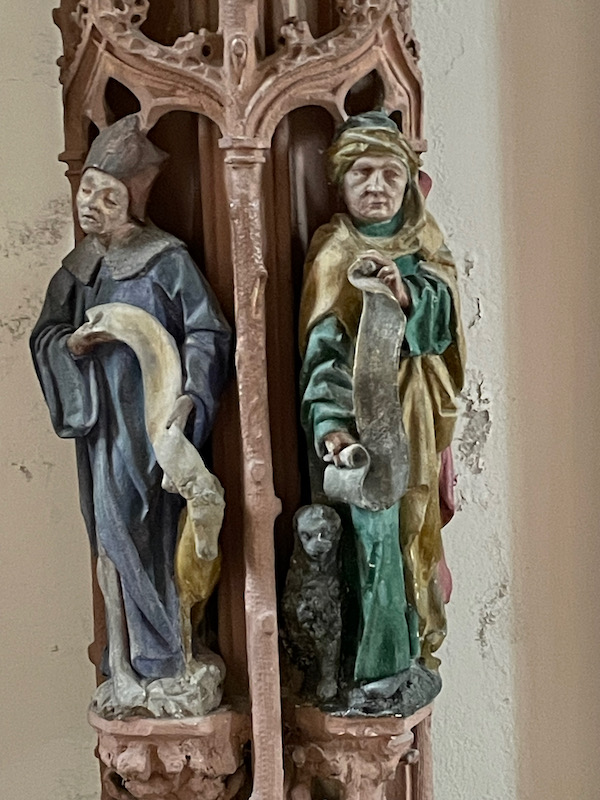
In April of 2023, 6 old fountains were turned into drinking fountains by the city. One of the selected fountains is this one, the market square fountain.
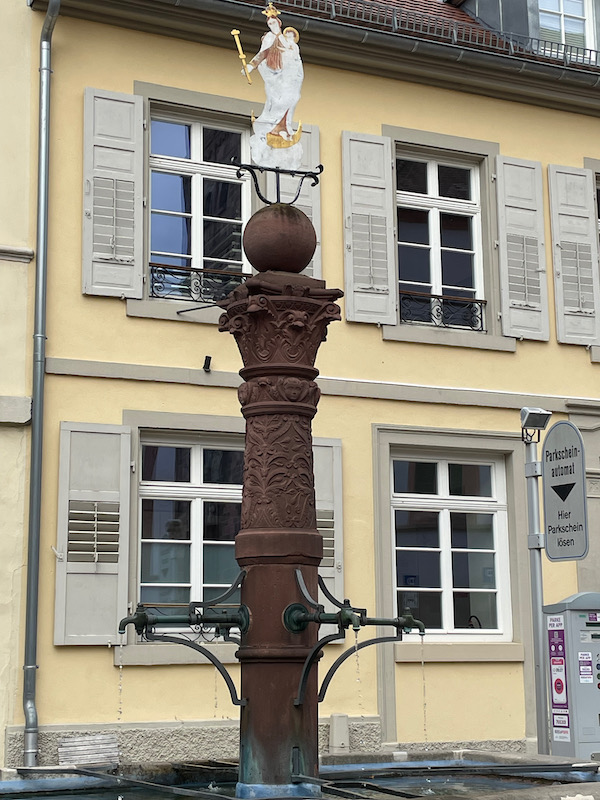
Along the Oos river is a park that was laid out in the English style in 1810. One part of this is the Kurhaus complex, built in 1824, which includes a spa resort, casino, and conference complex. This is the Trinkhalle, or pumphouse. Built in 1839, it has a large covered arcade that is lined with Corinthian pillars and frescoes portraying myths from the Black Forest.
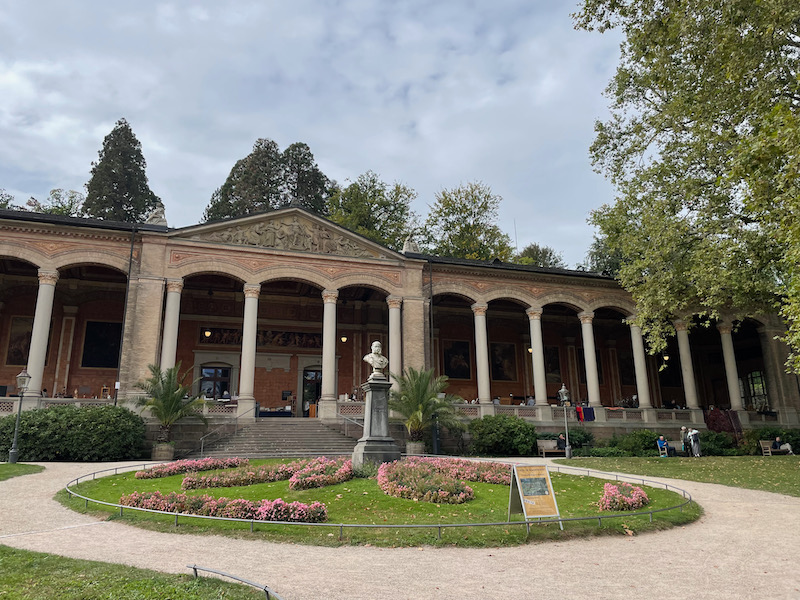
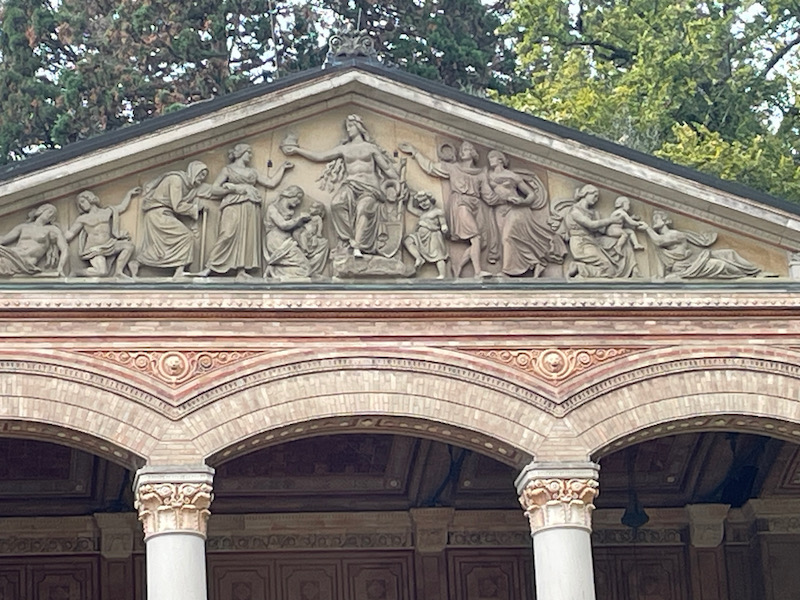
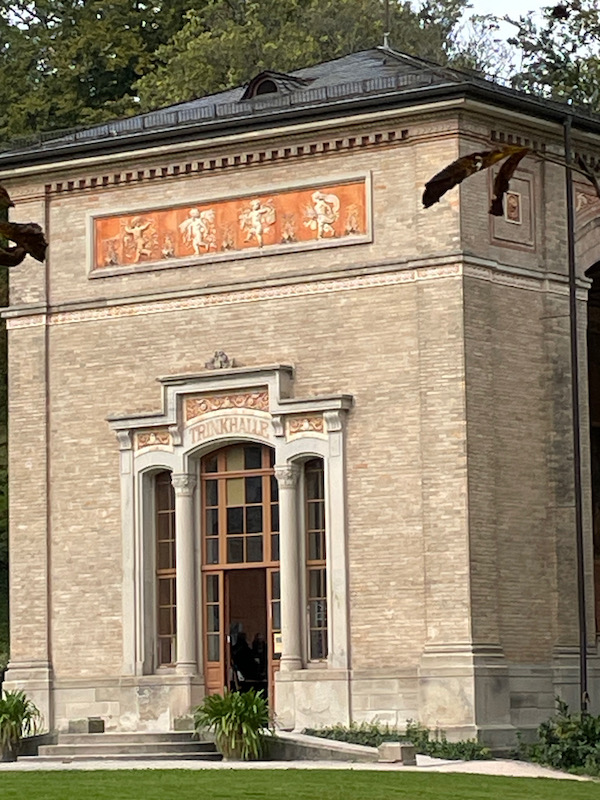
Also part of the complex is a theater that was completed in 1862 with classicist style elements on the outside and French Rococo style on the inside.
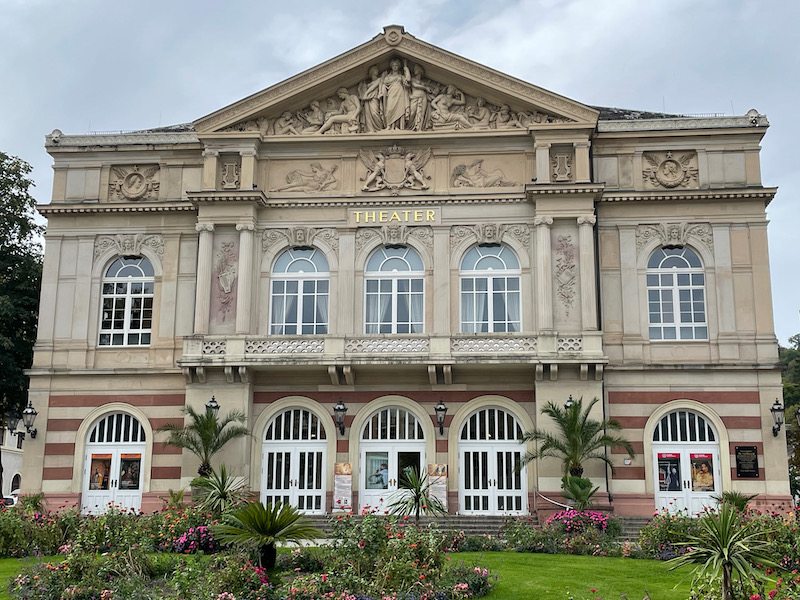
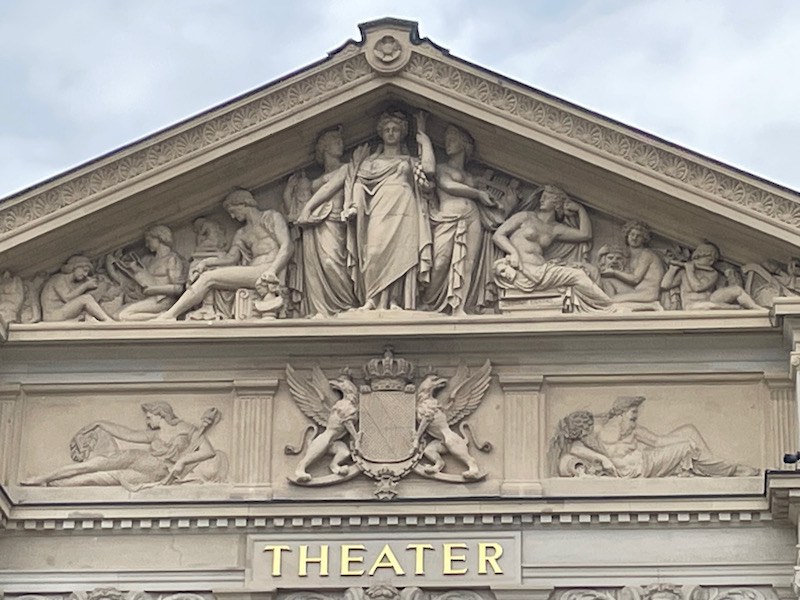
There are lots of fountains around town, but this first one is probably the most photographed! The Sintersteinbrunnen, also known as the stone fountain. The stones of different sizes, which are stacked in a pyramid shape, appear to be stacked somewhat haphazardly and are reminiscent of a pile of blocks that can often be found under rock walls in the Black Forest. The 2nd picture is a fountain in Augustaplatz which sits in the middle of an "artificial lake", The square is named after Empress Augusta , who was one of Baden-Baden's most loyal visitors in the 19th century and whose regular presence brought the city a lot of attention and attracted many other illustrious guests.
